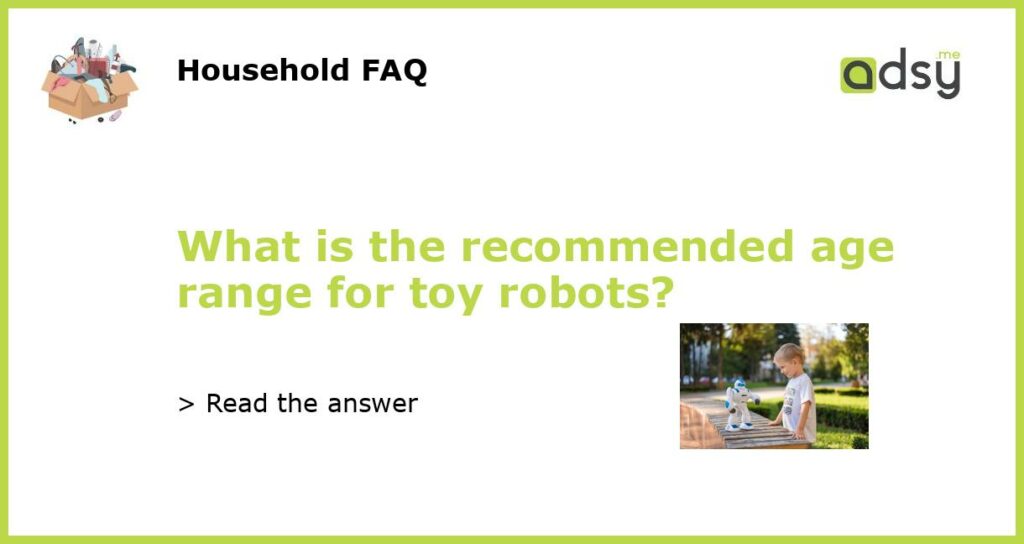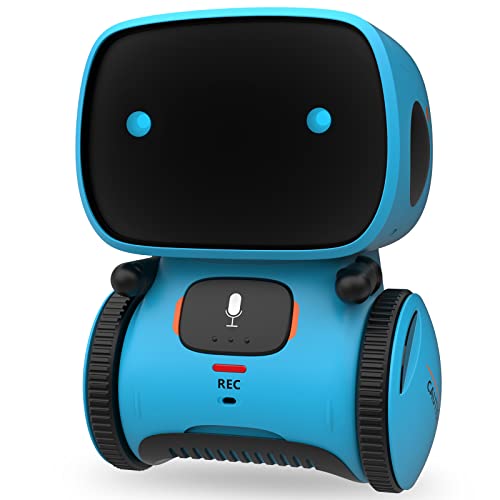What is the recommended age range for toy robots?
When it comes to choosing a toy robot for a child, finding the right age range is essential. Different robots are designed for different age groups, considering factors such as complexity, safety features, and educational value. In this article, we will explore the recommended age range for toy robots and discuss the importance of age-appropriate toys for children’s development.
Understanding the Importance of Age-Appropriate Toys
Age-appropriate toys play a crucial role in a child’s development. Toys that are specifically designed for a certain age range help children learn, grow, and have fun in a safe and engaging manner. The recommended age range for toy robots takes into account the child’s cognitive, physical, and emotional abilities, ensuring they can fully enjoy and benefit from their play experience.
Recommended Age Range for Toy Robots
The recommended age range for toy robots varies depending on the complexity and features of the robots. Here are some general guidelines:
Preschool Age (3-5 years)
For preschool-aged children, toy robots should be simple and easy to use. These robots often have larger buttons or switches and are designed to help children develop basic motor skills, hand-eye coordination, and problem-solving abilities. They may have simple programming capabilities or interactive features that introduce children to sequencing and cause-and-effect relationships.
Elementary Age (6-8 years)
Toy robots for elementary-aged children become more advanced and offer a broader range of activities and features. These robots may have more complex programming capabilities, sensors, and remote control options. They encourage creativity, logical thinking, and critical reasoning skills. Additionally, some robots in this age range may provide opportunities for learning coding concepts.
Middle School Age (9-12 years)
As children enter middle school, toy robots can become even more intricate and challenging. They may have advanced programming interfaces, computer connectivity, and more sophisticated sensors. These robots appeal to children’s curiosity and desire to explore the world around them. They offer opportunities for learning advanced coding, robotics engineering, and problem-solving skills.
High School Age (13+ years)
For high school-aged children, toy robots can serve as both educational tools and hobbyist options. These robots often have complex programming interfaces, modular designs, and advanced sensors. They can be used to learn advanced coding languages, robotics engineering principles, and even build custom robots. Toy robots in this age range are designed to inspire creativity, innovation, and critical thinking.
The Importance of Supervision and Safety
Regardless of the recommended age range, it is crucial for parents and guardians to supervise children while playing with toy robots. Safety precautions must be taken, such as following manufacturer guidelines, using suitable batteries, and ensuring age-appropriate usage. Additionally, it is advisable to encourage children to play with robots in safe and open spaces to avoid accidents or damage to the robot and other belongings.
Choosing a toy robot within the recommended age range is essential for ensuring children’s safety, development, and enjoyment. From preschool to high school, toy robots offer unique learning opportunities that align with children’s cognitive, physical, and emotional abilities. By investing in age-appropriate toy robots, parents and guardians can support their child’s educational journey and foster their interest in technology and robotics.






